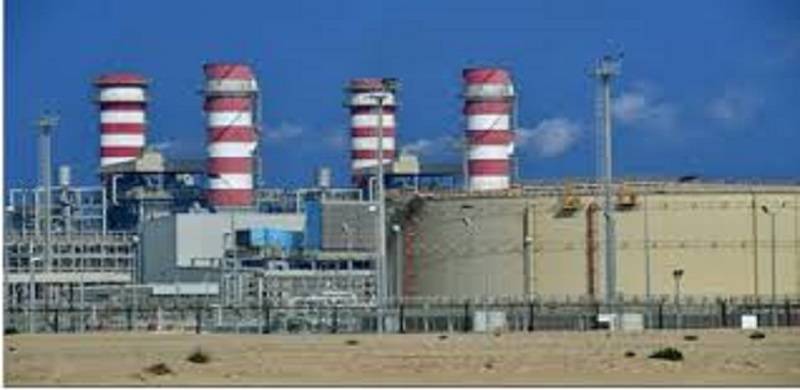
Global warming is the biggest problem of the modern world and human activities are changing the natural green house. Industrial activities have raised the atmospheric carbon dioxide to hazardous levels. Burning of fossil fuel to meet energy demand is majorly responsible for this.
Pakistan is in crippling energy shortage. When coal plants are becoming history in other countries, it is very horrifying that Pakistan is filling this energy gap by coal fired power plants. China is investing in 21 energy projects, 70% of 13.8 GW is planned under coal fired. There is a great risk that these energy projects will lock Pakistan on high carbon emission path way. If coal is used as a source of electricity 0.9 kg of CO2 is emitted per kWh production which is highest from all types of generation resources.
Surprisingly, carbon in atmosphere through innovation in technology can be converted to a great resource which is underutilized in today’s world. A vision that was unachievable in past through innovation can help to establish a growing economy that captures more carbon than it emits.
Pakistan government needs to be proactive and should collaborate with research institutions to build this new carbon economy as this is not inevitable and it should be built. Gap between the current and future technologies needs bridging. There is a wide range of solutions in new carbon economy.
For restoration of carbon balance in the atmosphere, we not only need to reduce our carbon emissions but also remove excessive carbon already present in the atmosphere.
Can we sell Carbon? Yes, it’s a huge market and can open up endless opportunities.
Carbon engineering a Canadian based clean energy company developed a pilot plant using (DAC) technology in Squamish, British Columbia which is removing CO2 since 2015 and converting it into useful fuels since 2017. CE along with their partners aiming to build an industrial DAC facilities that will each capture one million tons of CO2 per year which is equivalent to working of 40 million trees. CE’s direct air capture technology can remove one ton of Co2 from atmosphere in 100$.CE’s Air to fuel technology produces hydrocarbon fuels such as diesel and gasoline. Innovation in technology has shown how the harmful thing in atmosphere is converted to a valuable resource.
Global thermostat also used DAC technology and made pilot projects that remove 3000~4000 metric tons of CO2 per annum. Exxon Mobil wants to help Global Thermostat to make a bigger facility that will remove around 1 billion tons of CO2 per year. They claim that their cost for carbon removal can reduce to 50$ per ton or even less.
One of the effective ways to reduce cost is to sell captured carbon dioxide to soda manufacturing companies.
Clime work a Swiss company also capturing carbon dioxide from the atmosphere and selling it to food and beverages industry and to farmers that are using greenhouses so that additional CO2 can increase photo synthesis rate and boost crop yield.
Covestro became the first company to innovate Co2 based polymer naming Cardyon which is used in mattresses. It is made with up to 20% carbon dioxide.
Pakistan is an agricultural country and with technique of regenerative agriculture our farmers and their crops can help to reduce CO2 levels and climate change. Shifting to organic and regenerative agricultural techniques can increase crop yield, profitability and decrease greenhouse gas emissions which is win-win situation in every way.
Stored carbon in soil for years is lost into the atmosphere when land is prepared by digging and overturning for new plantation. Exposed and heavily tilled soils get exposed to winds and rains through which carbon escapes as a greenhouse gas.
Conservation tillage, covering crops and crop rotation practices can help in pulling carbon from atmosphere and increase soil organic carbon. General Mills a global food company initiated regenerated agricultural practices and aiming to cover 1 million acres of farm land by 2030. They have started several regenerated pilot projects in which farmers will get training from technical experts so that soil, climate health and farm profitability will increase.
Concrete industry is among big industries in Pakistan. Concrete industry is responsible for 5~7 % of total global carbon emissions. Production of one ton of cement produces about one ton of CO2. Concrete made by Solidia produces less CO2 in its production process and absorbs CO2 during the curing process.
We should take measures to take reduce total carbon foot print instead of practicing old methods that increases CO2 emissions. Pakistan should establish an energy road map and use all potential to build New Carbon Economy till 2050.
In Pakistan, unemployment is at its peak and according to PhD association of Pakistan more than 3000 PhD’s will face unemployment by the end of this year. Government needs to open up innovation centers that will create job opportunities for the bright minds. These innovation centers should work in collaboration with industries so that business models are made to enable adoption of low carbon solutions. Government should introduce carbon tax and waivers should be given to the industries that install carbon reduction systems and reduce their current emissions. Action is no longer an option, it has become necessity.
